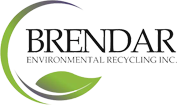Acid Waste - This is typically a liquid material that has a low pH. Generally pH less than 5 would be a weak acidic solution (irritant). If material has a pH of less than 2 it is classified as a corrosive waste material. Materials with a pH from 2 to 5 would still be acidic by general chemical principals. Examples: sulphuric, hydrochloric (also called muriatic) acid, phosphoric, hydrofluoric and nitric acids.
Neutral Waste - Neutral is generally stated as a pH of 7. Industry often uses a pH range of approximately 5 to 9. Examples: typically drinking water
Basic Waste - This is typically a solid or liquid material with a high pH. Generally a pH over 9 would be a weak basic solution (irritant). If a material has a pH of 12.5 or greater it is classified as corrosive basic (waste) material. Examples: sodium hydroxide, lime, quick lime, lye (potassium hydroxide) and ammonium hydroxide (ammonia solutions).
Corrosive Waste - These are strong acids or bases that are damaging to plants or animals. They may also be damaging to metals and non-metals and can initiate reactions.
pH - This is a measurement scale related to the "strength" of an acid or base. (This is intended as an unofficial but practical explanation of pH)
- 0 – 2: Strong Acid
- 2 – 5: Weak Acid
- 7: Neutral
- 5.5 – 9: Industrial Range for neutral materials
- 9 – 12.5: Weak Base
- 12.5 – 14: Strong Base
Alkali Material - These are high pH (basic) materials that have alkali metals associated with them (typically sodium and potassium) e.g. Alkali batteries have potassium hydroxide in them.
Flash Point - This is the temperature at which the vapours from a test material volatilize in sufficient concentration to combust when exposed to an open flame source. There is a standard laboratory procedure that describes how this is calculated.
Ignitable Waste - A material that has a flash point less than sixty one degrees Celsius
Waste Classes - This is a listing of numbers prepared by the MOE that represent groupings and sub groupings of wastes. Click here for details.
Organics - A grouping of chemicals containing carbon atoms in chains with hydrogen atoms bonded together. These materials are typically of plant or animal origin. These materials are often derived from the oil refining or petrochemical industry and they may be solid, liquid or gaseous.
Inorganics - A grouping of chemicals that typically does not include organic compounds. They may be metals or non-metals in either a solid, liquid or gaseous state.
Lab Pack Drums - A form of packaging used in the hazardous waste industry for safely transporting or storing small quantity containers. They are sorted for compatibility based upon their chemical properties.
Drums - Typically 45 imperial gallons (also referred to as 205 Litre or 55 US gallon) containers made of steel or plastic with a removable (open head drum) or sealed (closed head drum) top to the drum. They are used for handling liquids, solids, and lab pack waste materials.
Bulk Drums - These are drums that have solids or liquids placed in them for handling.
Bulk Liquids - These are aqueous or organic (or a combination) liquids or sludges that are usually handled in a tank type vehicle. (e.g. vacuum truck) Liquids are usually handled in this fashion due to larger volumes or ease of accessibility to the waste material.
Bulk Solids - These are inorganic or organic materials that are in a solid state. Due to their volume, they will be handled in larger waste equipment containers such as roll-offs, luggers or dump trailers. A term often referred to when shipping from remediation/clean up sites.
Solidification - The process whereby sludge materials are made solid. This is usually done by the addition of non-reactive absorption medium.
Incineration - The method of disposal for many organic streams with an associated heat value (e.g. solvents, paints). It may also be used for aqueous materials. The elimination of PCB's and pesticides are examples of solids or liquids that might be incinerated.
Waste Fuel or Supplemental Fuel - is a term used to describe organic materials that can be used as a fuel in a cement kiln. Solvents, paints, oil, fuels are all potential waste fuels.
Landfill - This is a form of entombment of waste materials. Specialty landfills include non-hazardous (our residential garbage/trash), hazardous (a specially equipped facility) or mono-fill (a site for a specific type of waste).

